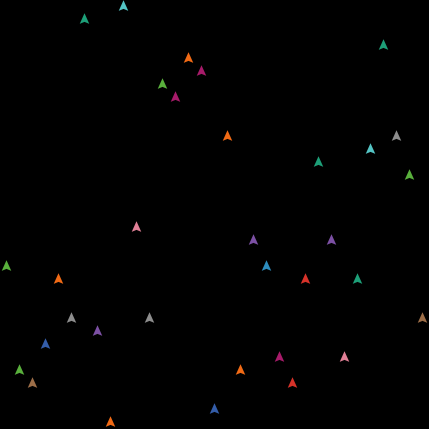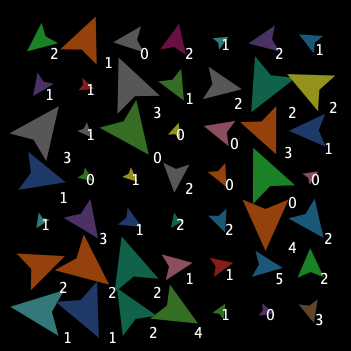

GIS Gradient Example provides another example of how to use the GIS extension. See the other GIS code example, GIS Gradient Example, for an example of this technique. This model doesn't do anything particularly interesting, but you can easily copy some of the code from the Code tab into a new model that uses your own data, or does something interesting with the included data. For example, you could modify highlight-large-cities to highlight small cities instead, by replacing gis:find-greater-than with gis:find-less-than. Most of the commands in the Code tab can be easily modified to display slightly different information. See the code tab for specific information about how the different buttons work. You can then use all other features of the mode. Select a map projection from the projection menu, then click the setup button. The planets revolving around the sun is a prominent example of circular motion in real life.The planets tend to follow a fixed circular orbit that acts as the boundary of the circle, while the sun acts as the centre of the circular path.
#Netlogo code examples Patch
It provides a collection of different ways to draw the data to the drawing layer, run queries on it, and transform it into NetLogo Turtles or Patch data. This model loads four different GIS datasets: a point file of world cities, a polyline file of world rivers, a polygon file of countries, and a raster file of surface elevation. This model was built to test and demonstrate the functionality of the GIS NetLogo extension.
#Netlogo code examples download
Note: If you download the NetLogo application, every model in the Models Library is included. (back to the library) GIS General Examples Nodes are turtles, edges are links.NetLogo Models Library: GIS General Examplesīeginners Interactive NetLogo Dictionary (BIND) This makes the network "bipartite." (You might position the two kinds of nodes in two straight lines.) NETLOGO FEATURES

Make two kinds of nodes, differentiated by color, then only allow links to connect two nodes that are different colors. If the world is a torus every patch will have eight neighbors, if wrapping is not allowed. These include neighbors, neighbors4, in-radius, and at-points: neighbors: reports the patches surrounding a patch or turtle both patches that share a side and those that share a corner.

In this particular example, the links are undirected. You can use it as the basis for your own model that actually does something with them.

This example doesn't do anything in particular with the nodes and links. The network consists of a collection of nodes, some of which are connected by links. This example demonstrates how to make a network in NetLogo. You can also Try running it in NetLogo Web If you download the NetLogo application, this model is included. Beginners Interactive NetLogo Dictionary (BIND)


 0 kommentar(er)
0 kommentar(er)
